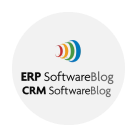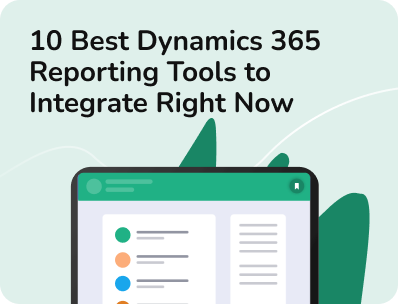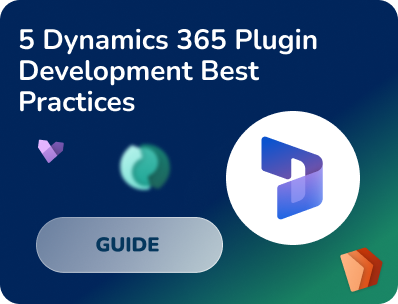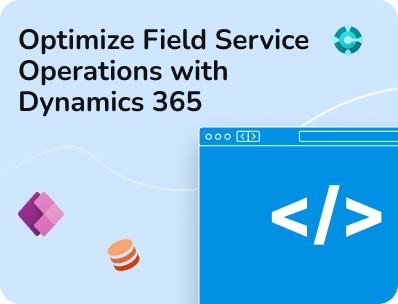- Services
- ConsultantsMODULESLegacy Support
- Industries
- Locations
WESTERN & NORTHERN EUROPE
EASTERN & CENTRAL EUROPE
- Our Company
 About Us
About UsLearn more about our HireDynamicsDevelopers portal and the team behind it.
Case StudiesRead successful stories from our clients across various industries.
ServicesFind the right service according to your specific business needs.

- Services
- ConsultantsMODULESLegacy Support
- Industries
- Locations
WESTERN & NORTHERN EUROPE
EASTERN & CENTRAL EUROPE
- Our Company
 About Us
About UsLearn more about our HireDynamicsDevelopers portal and the team behind it.
Case StudiesRead successful stories from our clients across various industries.
ServicesFind the right service according to your specific business needs.

Salesforce to Dynamics 365 Migration
Updated: October 14th, 2025 by Ivan Farafonov
Migrating from one customer relationship management (CRM) system to another is a complex yet increasingly common process as businesses seek to optimize their operations. A transition involves not just a shift in technology, but also a strategic decision influenced by factors like customization needs, integration capabilities, total cost of ownership, and the platform’s alignment with existing IT ecosystems.
Let’s explore why companies may need a Salesforce to Dynamics 365 migration and delve into the crucial steps.
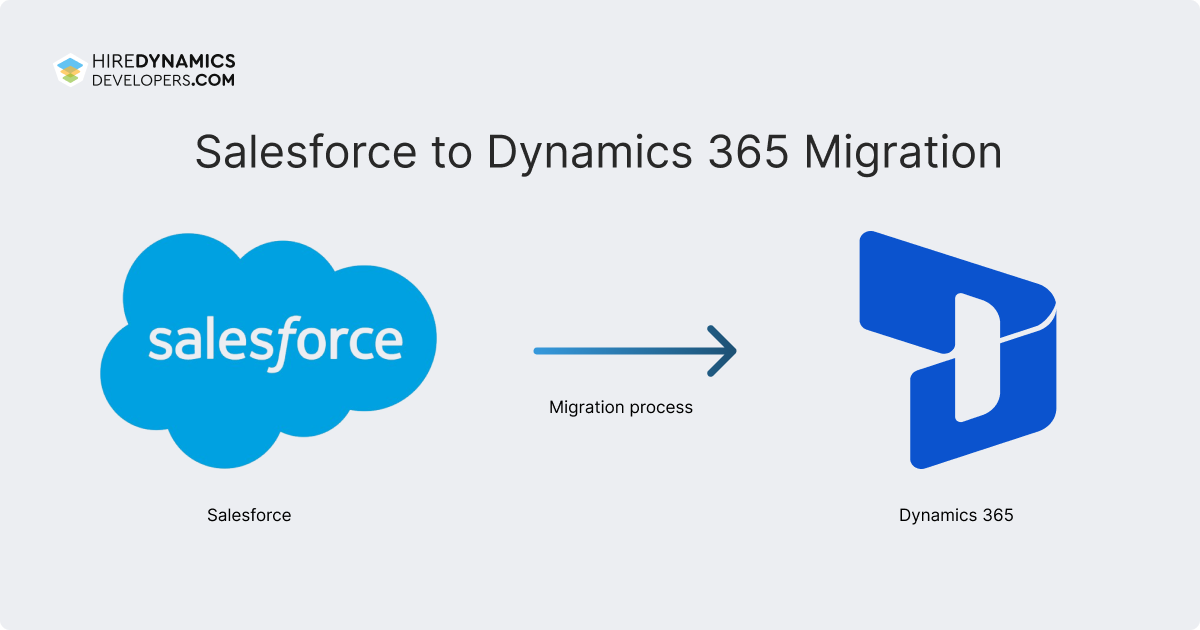
Why Businesses Decide to Switch from Salesforce to Dynamics 365
Many businesses are thinking about Salesforce CRM to Dynamics 365 migration. This decision is dictated by the fact that D365 offers a comprehensive suite to cover all your business needs. This includes financial management, customer interactions, marketing, and even HR processes within the company. With Dynamics, you get a common ecosystem that combines all these tools and data. Here are more reasons for Salesforce to Dynamics migration:
Cost-Effective Pricing Plans
D365 offers a variety of pricing plans tailored to business needs. Additionally, if your business already uses other Microsoft products, this can lead to even better cost efficiency.
Integration with Other Microsoft Products
You get CRM integration with existing Microsoft products such as Office 365, Word, Excel, Outlook, Power BI, and more. This integration allows you to gather all details in one space, improve analytics, and enhance collaboration across departments without additional connectors or third-party tools.
User Experience
Dynamics 365 has a convenient & user-friendly interface. Moreover, it can be fully customized to match the specific needs of different roles. In addition, many users are already accustomed to the look and feel of Microsoft products, reducing the learning curve and making the transition smoother for end-users.
Flexibility
While both platforms offer customization, D365 provides more flexibility and easier customization through tools like Power Apps and Power Automate, allowing businesses to tailor the system to their unique processes.
Security and Compliance
Built on the Microsoft Azure cloud platform, Dynamics 365 uses Microsoft's advanced security features and compliance certifications. As a result, your information is protected by industry-leading security protocols, so your sensitive details stay safe and secure.
Adaptability to Industry-Specific Needs
Companies prefer Salesforce to Dynamics CRM migration to get industry-specific solutions, such as Finance and Operations or Healthcare. They provide features for different sectors and handle industry challenges without extensive customization.
Hire Dynamics 365 migration expert for a smooth transition!
Planning a Migration from Salesforce to Dynamics CRM
Once the decision about Salesforce CRM to Dynamics CRM migration has been made, you should thoroughly analyze your source system. Here are some essential steps to follow:
Inspect data structure
At this step, you need to identify core entities your system uses, custom workflows, integrations, and the overall quality. A detailed analysis helps map Salesforce functionalities to their equivalents in D365. As a result, you ensure all essential features will be prepared for a safe process.
Analyzing which data to migrate
Not all details may be necessary for your new system. That is why decide which Salesforce data to transfer based on the relevance and your business needs. This step allows you to avoid overloading and start working with a new system without unnecessary information.
Content assessment and cleansing
Content quality is critical in the success of Salesforce to Dynamics CRM data migration. Before exporting content from the platform, assess its quality by identifying duplicates, outdated information, and inconsistencies. Cleansing involves correcting these issues, standardizing formats, and ensuring that only relevant and accurate information is implemented into the new platform.
Team members preparing
The transition also involves preparing all system users. Webinars and tutorials can make the learning process more effective and help users adapt quickly to the new system. With this approach, you make the transition smooth and hassle-free. Moreover, you may avoid errors and manual issues if your staff is ready to deal with a platform toolkit.
The Migration Process
After planning the migration strategy, it’s time to carry out the actual process. Before starting, ensure you have backed up your details from the environment. It will protect your company’s information if any issues arise during the transition.
Exporting data
From the Home page of your Salesforce environment, open “Quick Settings” in the top right corner and select “Open Advanced Setup”.
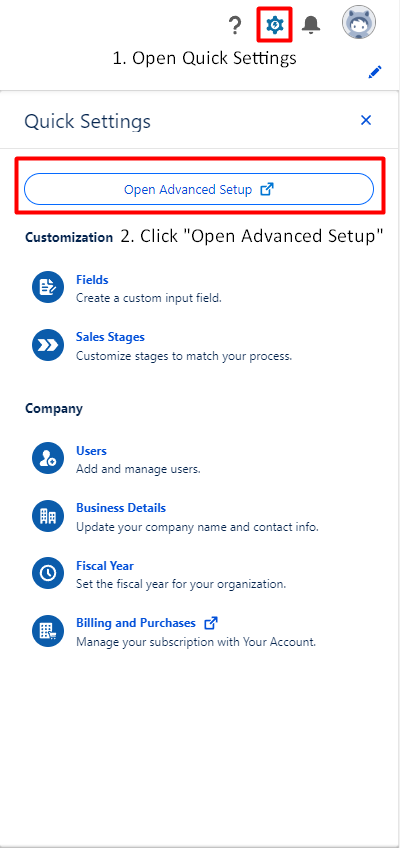
In the new tab, type “Data Export” in the Quick Find input box. Select “Data Export” and choose “Export Now” or “Schedule Export”. “Export Now” allows immediate data export, while “Schedule Export” lets you set up a weekly or monthly export.
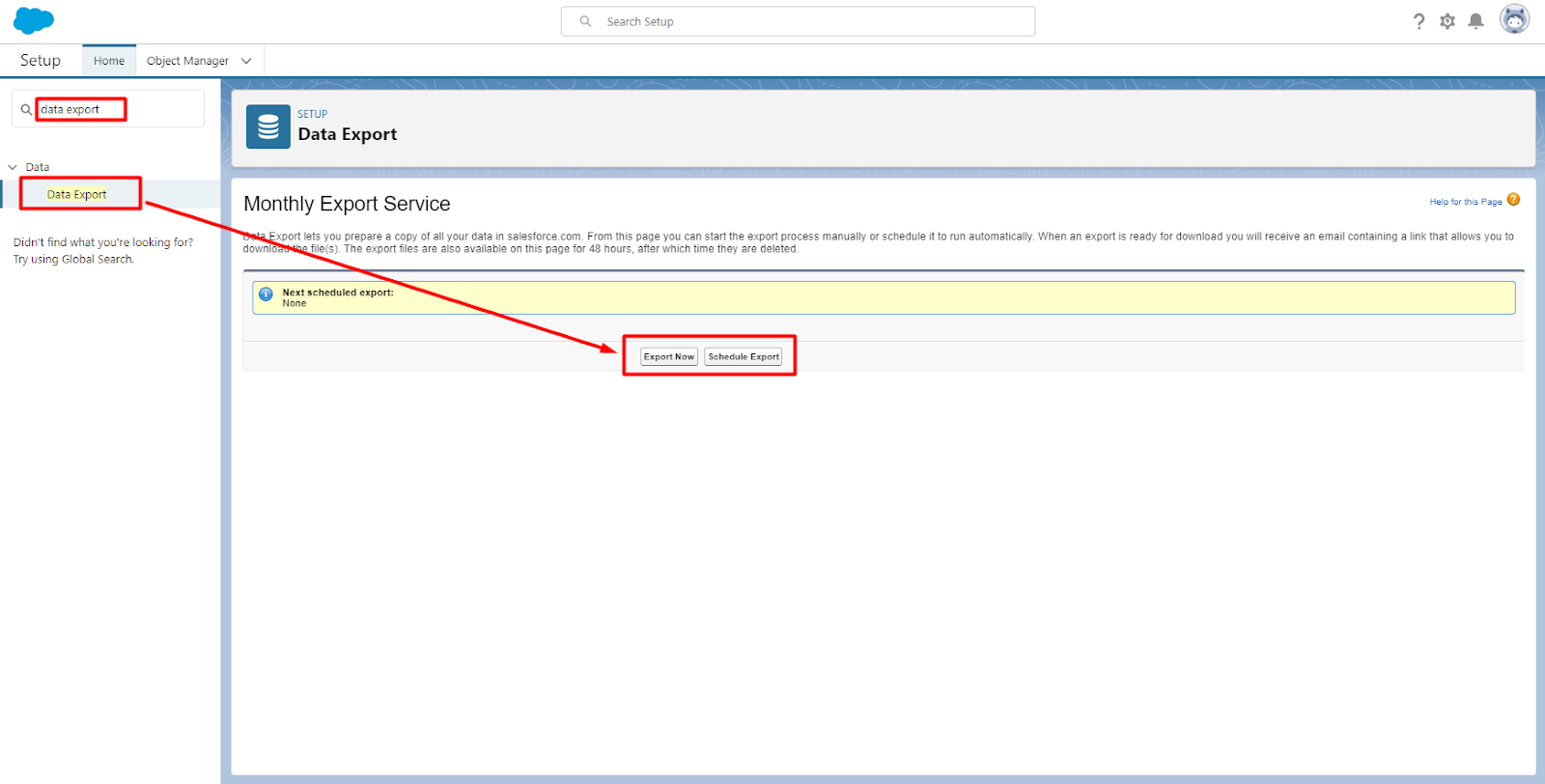
The next step is to select the desired Export File Encoding, and if needed, include images, documents, attachments, and other files. Replace carriage returns with spaces will replace the line breaks with spaces. It is recommended to check this option if you want to import your files to another environment.
Below you can see a list of data types from your system. You can select specific types to export or choose to include all content.
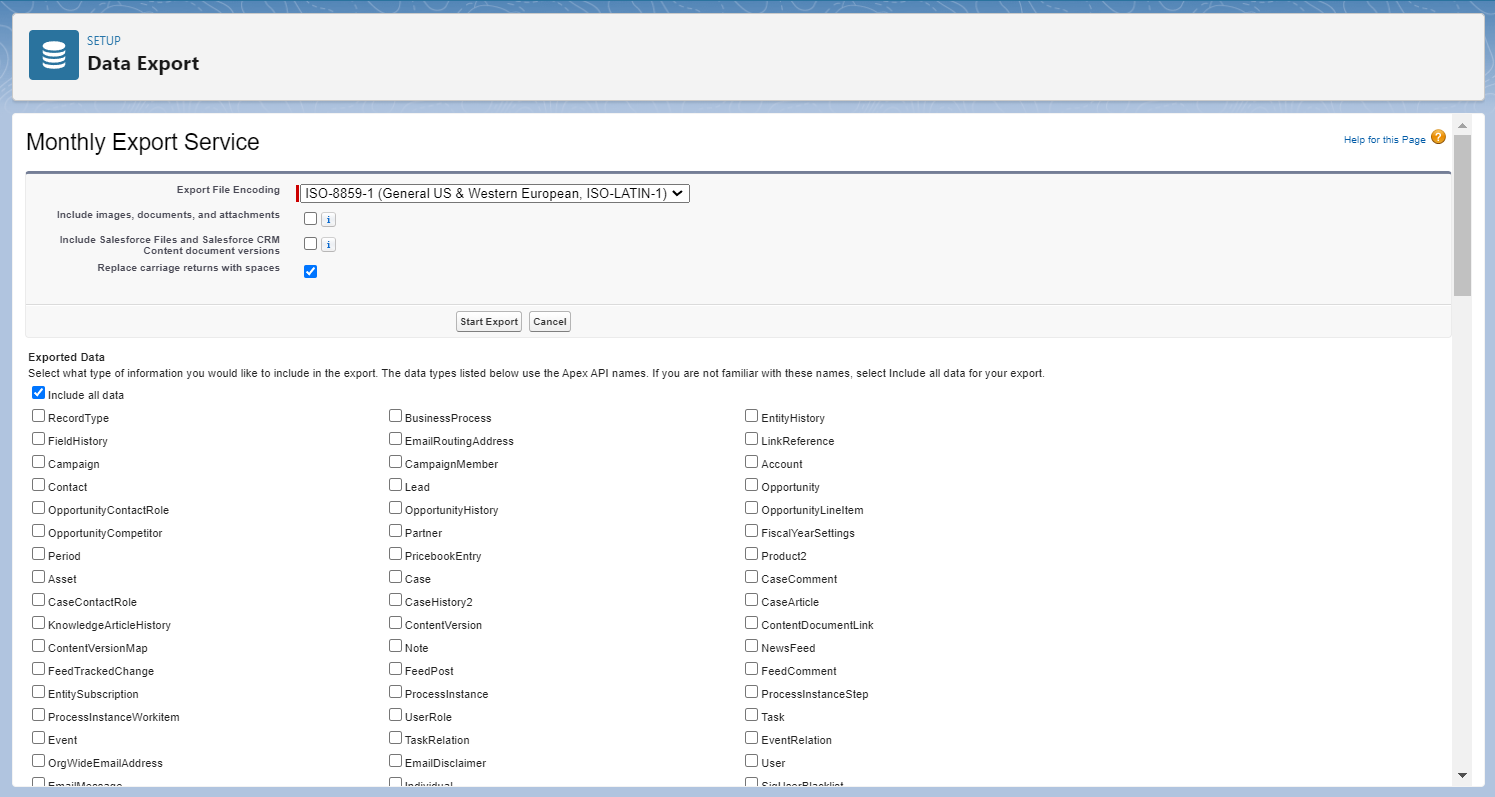
If you scheduled an export, use the migration tool to set the exact time for the process to start.

When the export is ready, you’ll receive an email with a download link to a .zip archive containing .csv files for each selected type. These export files remain available for 48 hours.
Importing Data
Now you are ready to import your data to D365. To import your data from .csv files you should open Advanced Settings.
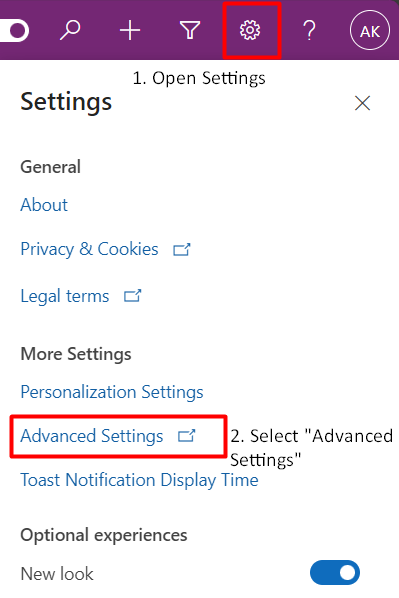
In the opened tab select “Data Management” – “Imports” – “Import Data”.

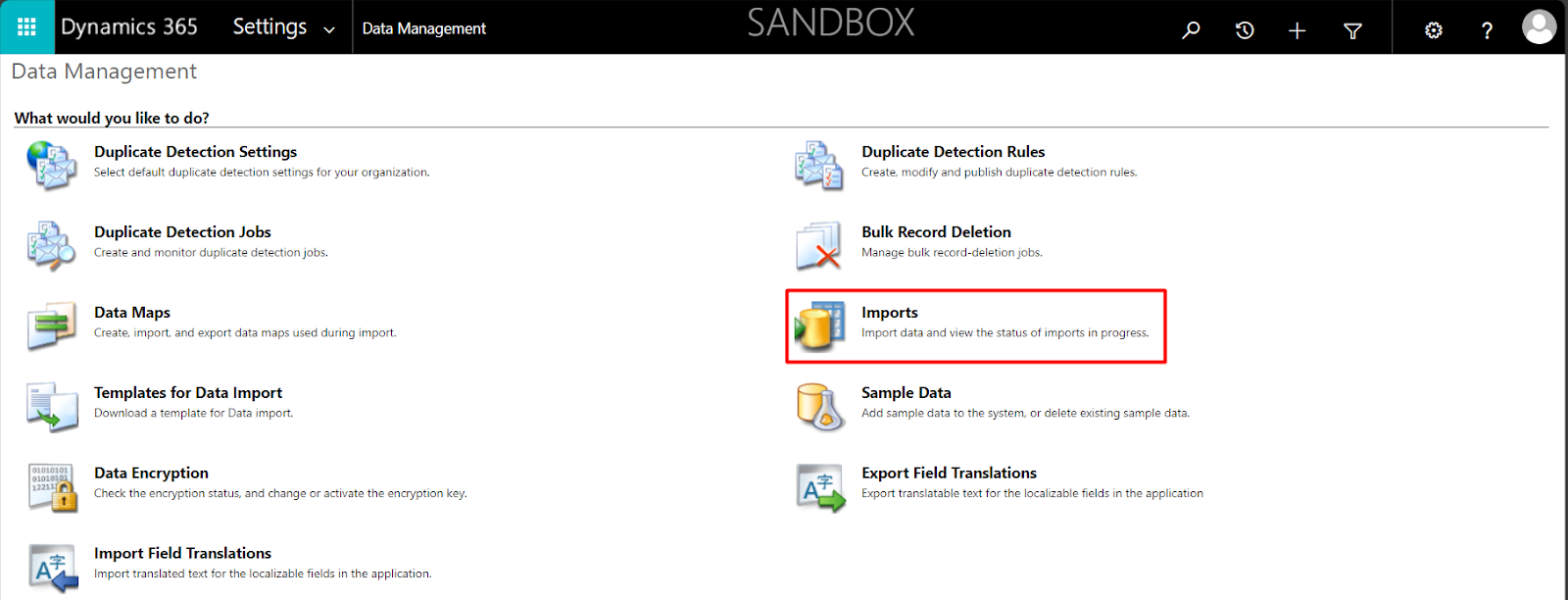

In the pop-up window, choose the .csv files to import and click “Next”.
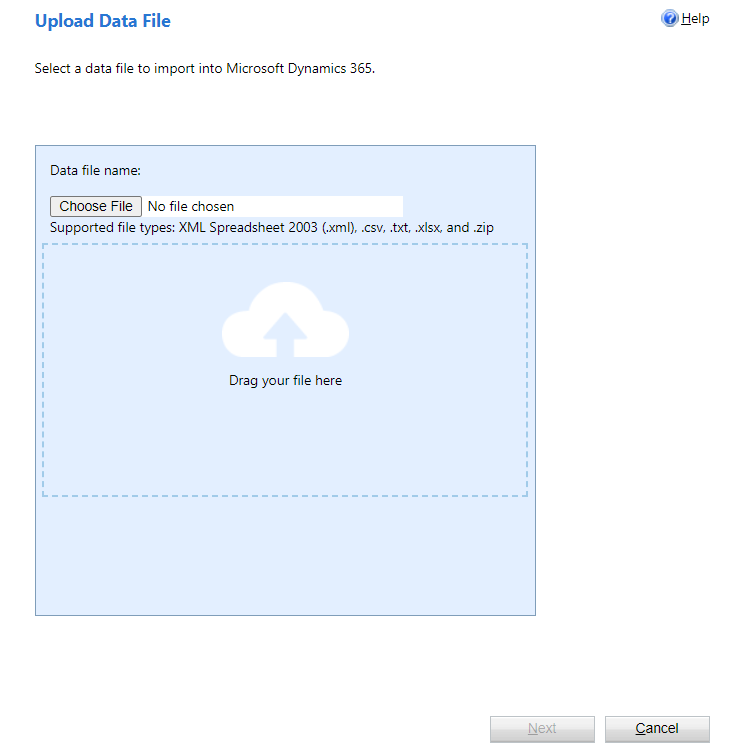
Select the delimiters used in your files and ensure that the “First row contains column headings” checkbox is selected.
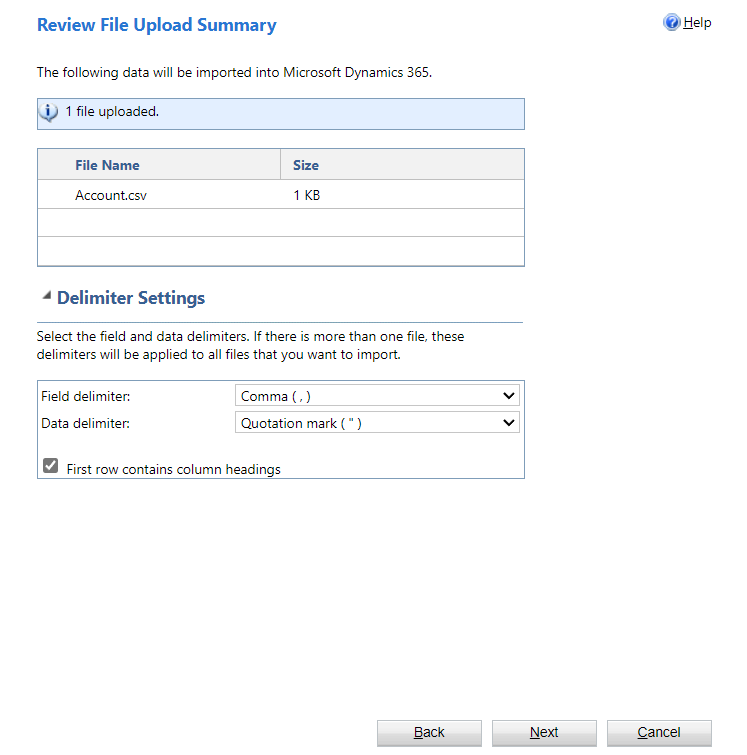
Choose “Default (Automatic Mapping)” to map data types from your .csv files with entities. If necessary, create new entities with fields from your files.
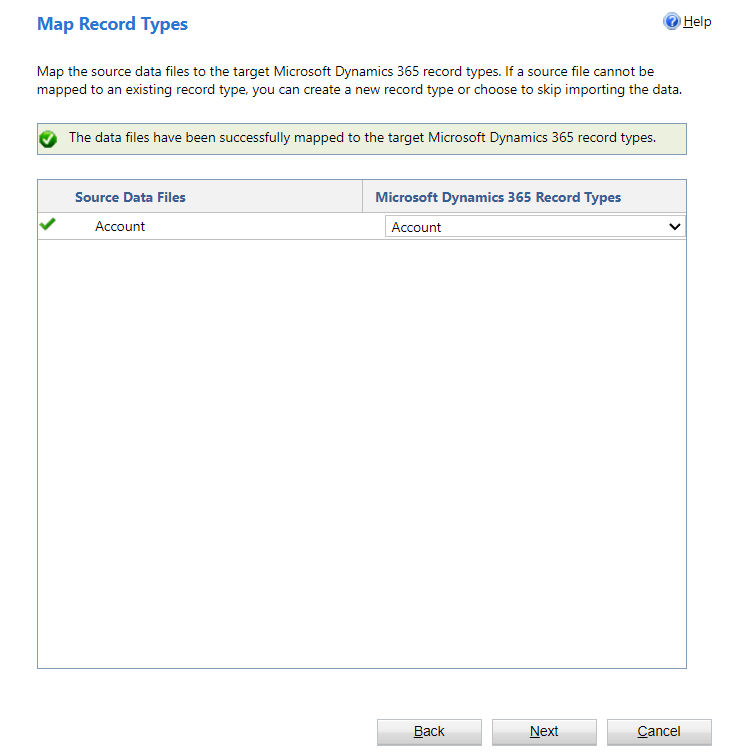
Map the columns from your import files with the fields of the selected entity, ensuring no fields are left unmapped. If you leave any “Not Mapped” field it will be ignored during the import.
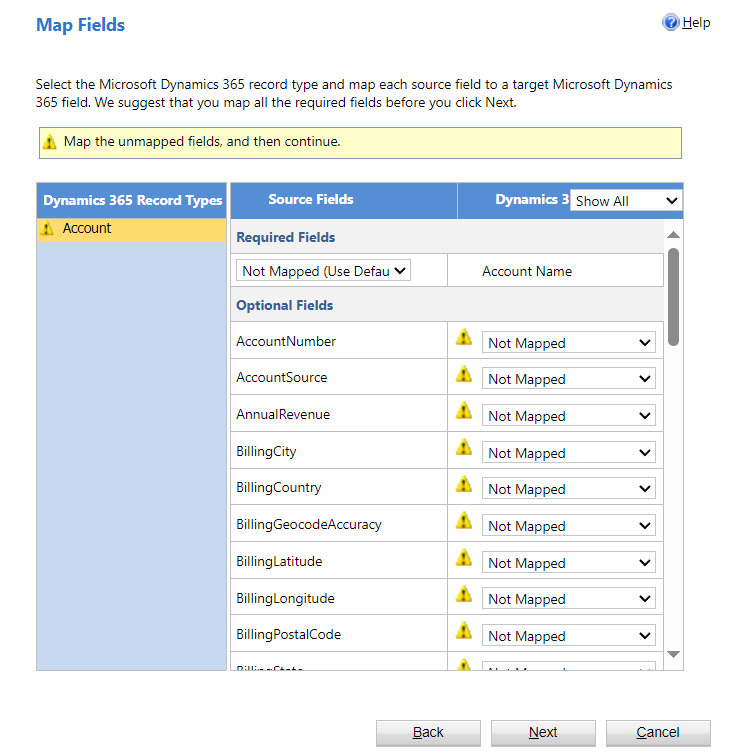
Finally, decide whether to allow duplicates and assign an owner for the imported records. Click “Submit” to start the import process.
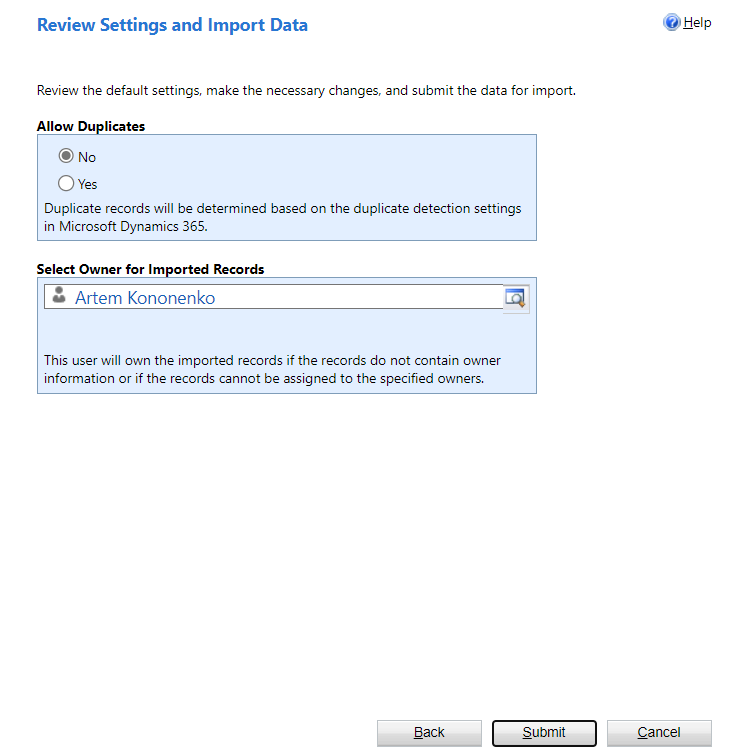
Post-Migration Process
When you’ve completed the Salesforce to Dynamics 365 migration process, it’s time to start post-migration activities. They help keep the newly launched system afloat in the first period of operation and provide support for your team. In the long run, it helps to keep your platform up and running for a long time and avoid failures and downtime.
Here are key steps to ensure your migrating from Salesforce to Microsoft Dynamics CRM is successful.
Data Validation
It is necessary to ensure all content is imported correctly and works as expected. This process involves verifying that all records are present, field mappings are correct, and no data has been lost or corrupted. First, comparing data between two apps helps ensure consistency, especially for critical information such as customer records, sales, and historical transactions.
User Training
Training is required to ensure that users feel comfortable using the new technology. Customize training courses to cover important functionalities, new features, and workflow modifications. Providing continuing support and resources, such as user guides, tutorials, or a dedicated helpdesk, helps to smooth the transition and encourages increased user adoption.
Performance Monitoring
Based on feedback and initial performance monitoring, refine any customizations, automation, or integrations. It may include tweaking workflows, adjusting dashboards, or reconfiguring integrations with other applications to better align with user needs and optimize business processes. Also, cosider Microsoft Dynamics CRM integration services to ensure smooth interaction with other systems.
Support & Maintenance
You need a reliable backup to keep your Microsoft Dynamics data intact and your system running smoothly. This includes regular system health checks to detect and correct errors in the early stages. This prevents major disruptions and ensures the durability of your software.
Connect Salesforce to Dynamics 365 to Get Features of Both Systems
If you want to keep the existing Salesforce features but also take advantage of Dynamics 365, consider Salesforce Dynamics 365 integration. This approach allows your company to retain the convenient Salesforce tools for working with customers and sales while using the powerful Microsoft ecosystem for analytics, finance, automation, and flexible customization. Thanks to integration, you get a unified view of your data and can avoid losing important information during a full migration.
It is worth noting that Salesforce Dynamics CRM integration will also help improve internal interactions. This ensures smooth collaboration between teams working in different environments and increases the efficiency of customer experience management. For example, deal and contact data from Salesforce can be synchronized with Dynamics 365 financial modules, and marketing campaigns from Microsoft Dynamics Marketing can be automatically displayed in Salesforce for performance tracking. As a result, your company will operate without gaps or duplication of work thanks to the best features from both platforms.
Dynamics Modules to Integrate with Salesforce
Finance
Salesforce Microsoft Dynamics 365 Finance integration allows you to synchronize customer and deal data with financial reporting, budgeting, and expense management. This increases the transparency of financial processes and simplifies the preparation of analytical reports for management.
Business Central
If you want a single platform for managing sales, inventory, orders, and finances, consider Salesforce Microsoft Dynamics 365 Business Central integration. This allows you to synchronize customer data from Salesforce with your operational activities in a single ecosystem.
Marketing
Connecting Salesforce to Dynamics Marketing helps you create personalized campaigns and track their effectiveness. The sales department gets access to marketing analytics, and the marketing department can work with customer data in Salesforce, which improves team coordination.
Supply Chain
Integration with the Supply Chain module provides visibility into the supply chain, reduces the risk of delays, and allows you to predict customer needs. Data from Salesforce will directly influence production planning and inventory management.
Human Resources
Combining the Dynamics 365 HR module with Salesforce is useful for companies with large sales departments. It allows you to synchronize information about personnel, training, and employee performance with CRM data and create a comprehensive team development strategy.
Commerce
Integration with the Commerce module helps combine online and offline sales data with the Salesforce customer base. Businesses gain a 360-degree view of buyer behavior, enabling them to build personalized offers and improve the customer experience.
Integrating Dynamics 365 and Salesforce requires technical skills and an understanding of both systems. If you need assistance with this task, contact us to hire integration experts. Our consultants are well-versed in Salesforce integrations with any D365 modules and will help you set everything up quickly, efficiently, and reliably.
Our Successful Case Study
- USA
- Computer Hardware
- Part-Time Engagement
- 2 Salesforce & Microsoft Dynamics 365 Integration Specialists
- Microsoft Dynamics 365, Salesforce, Integration & Data Migration
Our client is a leading provider of high-quality computer hardware and support for the US market since 1988.
After evaluating multiple options to connect their Salesforce CRM with Microsoft Dynamics 365, they selected us for our deep industry knowledge and broad expertise in both platforms. Their main goal was to create a seamless integration that improves workflows, ensures data consistency, and enhances collaboration between sales, operations, and finance teams.
We assembled a team of two part-time specialists skilled in both Dynamics 365 and Salesforce integration. Even working part-time, they delivered significant impact by optimizing data flows, automating key processes, and enabling a unified view of customer and operational data. Their adaptability, expertise, and proactive approach have helped build an integrated solution that empowers the client’s teams and improves overall business efficiency.
HireDynamicsDevelopers Services for Salesforce & Dynamics Systems
Salesforce to Dynamics 365 migration steps require expertise in both platforms. Moreover, the transition process is about attentiveness to details and full dedication to each stage. If you would like to simplify this process, we are here to help! Let’s explore how you can benefit from our assistance.
We can find skilled and reliable developers. They have relevant experience in many industries and are proficient in Dynamics 365 data migration. With their expertise, developers ensure a secure transition, where all content stays protected. Moreover, you get a fully personalized system with custom features for your business needs. This way, when you hire Microsoft Dynamics 365 CRM consultant, your team may get started with the platform without the hassle.
Explore the Dynamics 365 migration consulting services you can get:
Custom Object and Field Migration
Consultants analyze all Salesforce custom objects and fields and plan how to migrate them correctly to Dynamics 365. They create mappings between objects and check dependencies to ensure that data remains accurate and complete after migration.
Workflow and Automation Transfer
Specialists examine all automated processes in Salesforce and develop a plan to reproduce them in Dynamics 365. They set up Power Automate, create new processes, and test them to ensure that the business logic works as efficiently as in Salesforce.
Data Quality and Deduplication Services
Consultants audit data, find duplicates and errors, standardize record formats, and clean up the database. This ensures high data quality before migration and avoids customer accounting issues in D365.
Attachment and File Migration
Specialists plan and execute the transfer of all files, notes, and attachments associated with Salesforce records. They ensure that files are placed in the correct Dynamics 365 entities and are accessible to users without any loss of information.
Third-Party Integration Migration
Consultants analyze all third-party Salesforce integrations, including ERP, marketing platforms, and other systems. Experts also configure API connections in Dynamics 365 and test them to ensure that data synchronization continues without interruption.
User Role, Security, and Permission Setup
Specialists evaluate roles, profiles, and access rights in Salesforce and recreate them in Dynamics 365 according to the company’s needs. The service also includes detailed testing of user access rights to ensure data security and proper system operation.
Let’s note, we offer different cooperation models, so you may find the most relevant and convenient option for your team. For instance, if you need full-time assistance, you may choose a dedicated development team that will be on your side at each step of the transition. In the case of short-term tasks, you may consider part-time consultants. This way, you may save costs and also achieve excellent results.
Some of Our Migration Experts
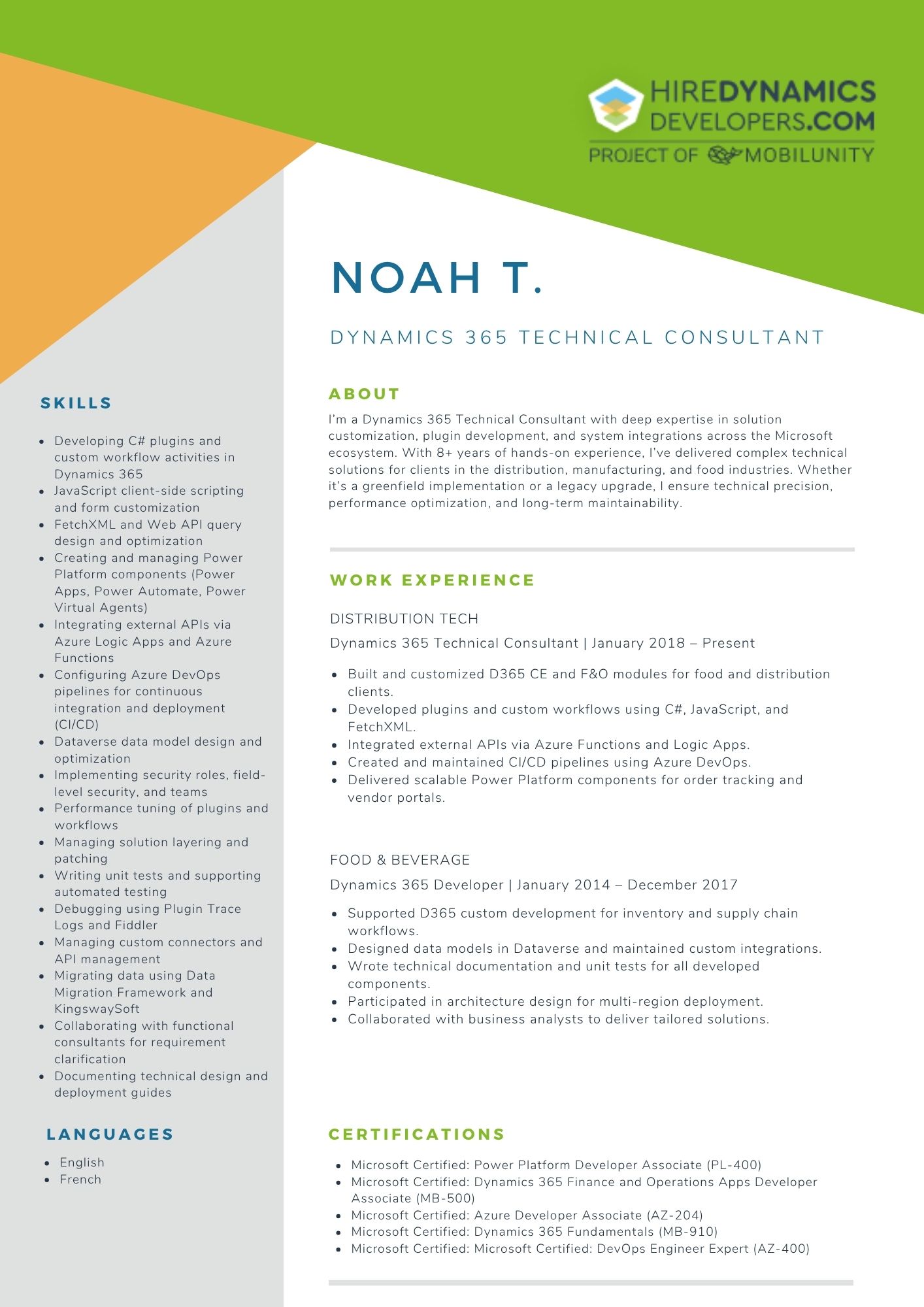
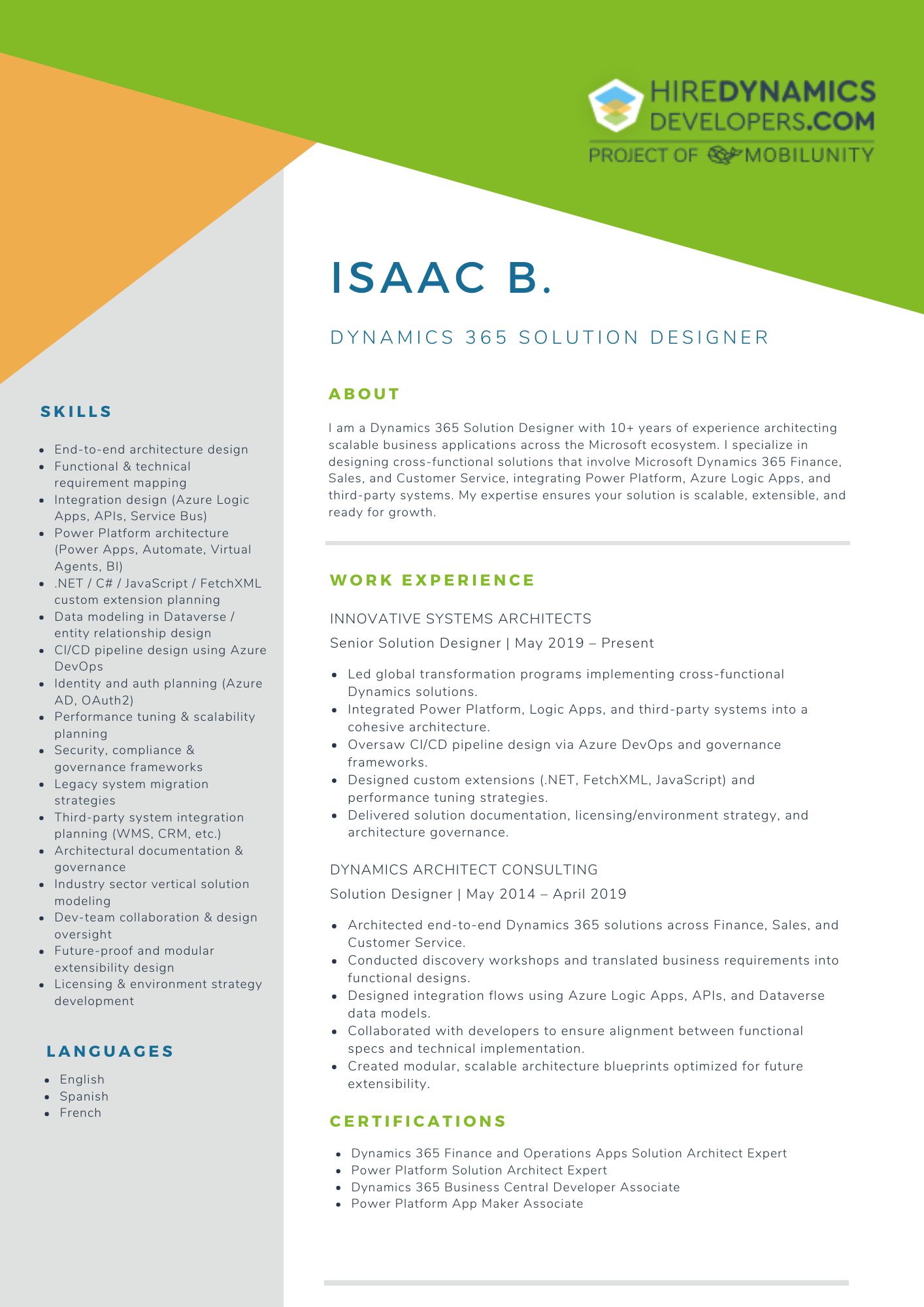
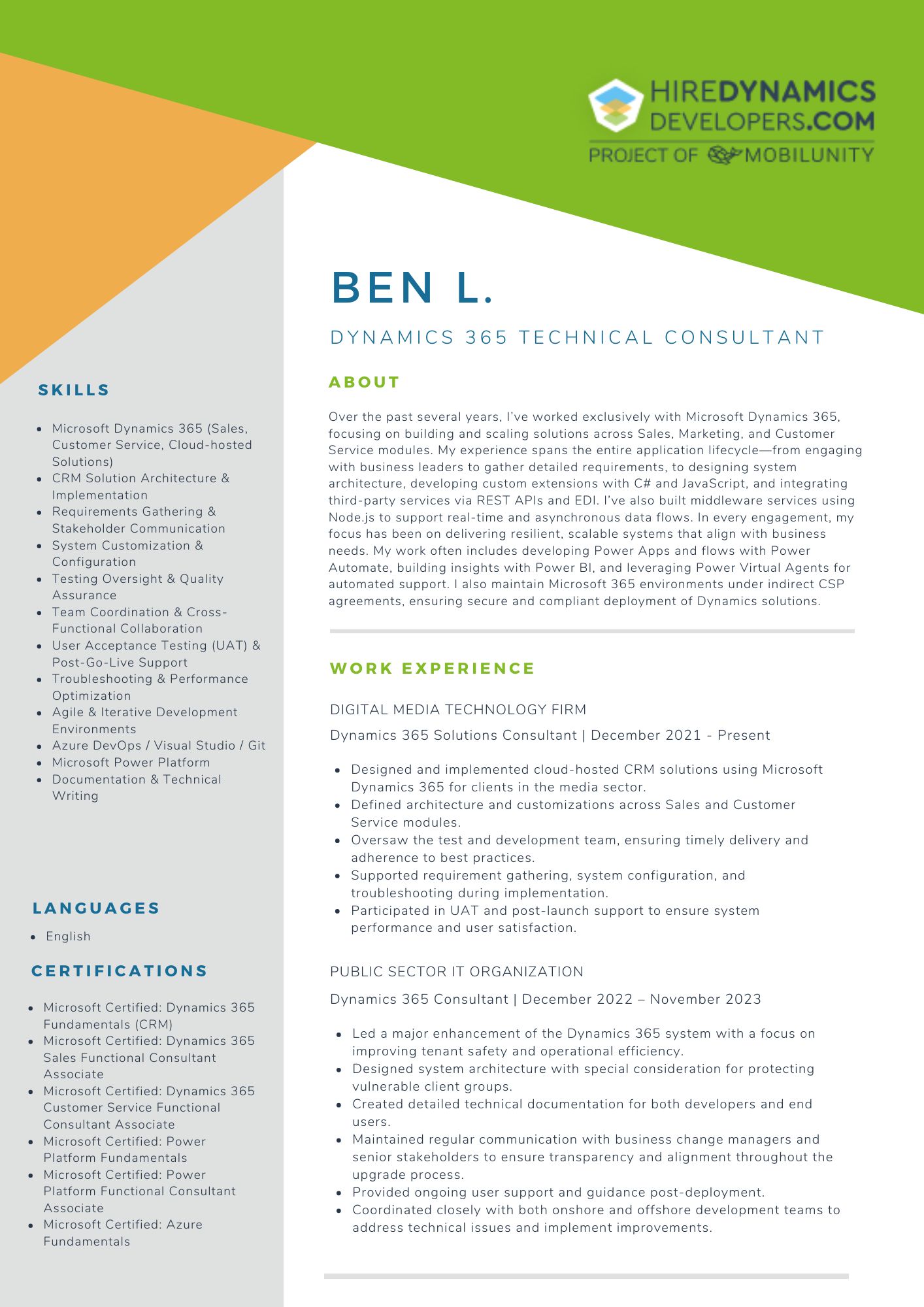
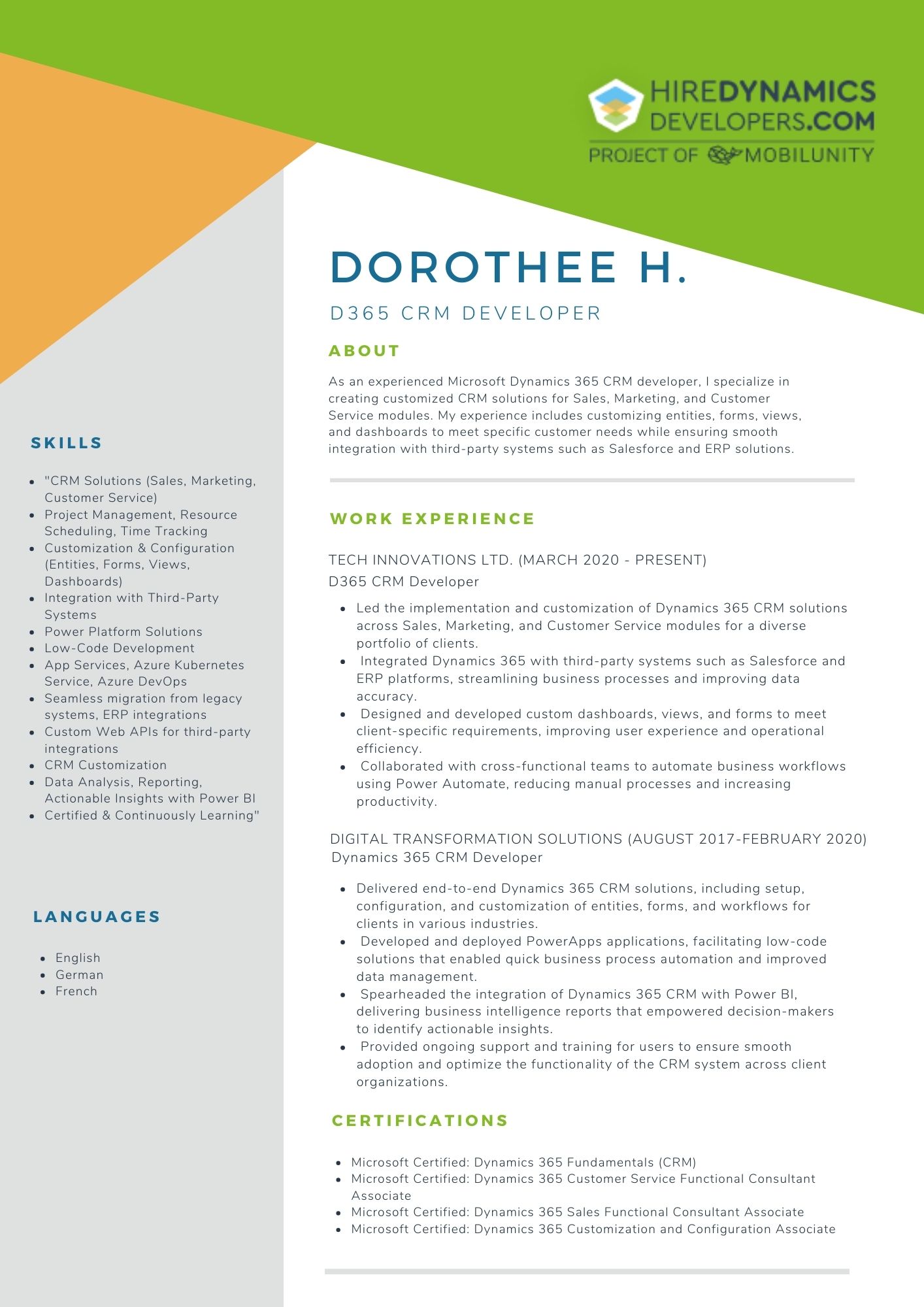
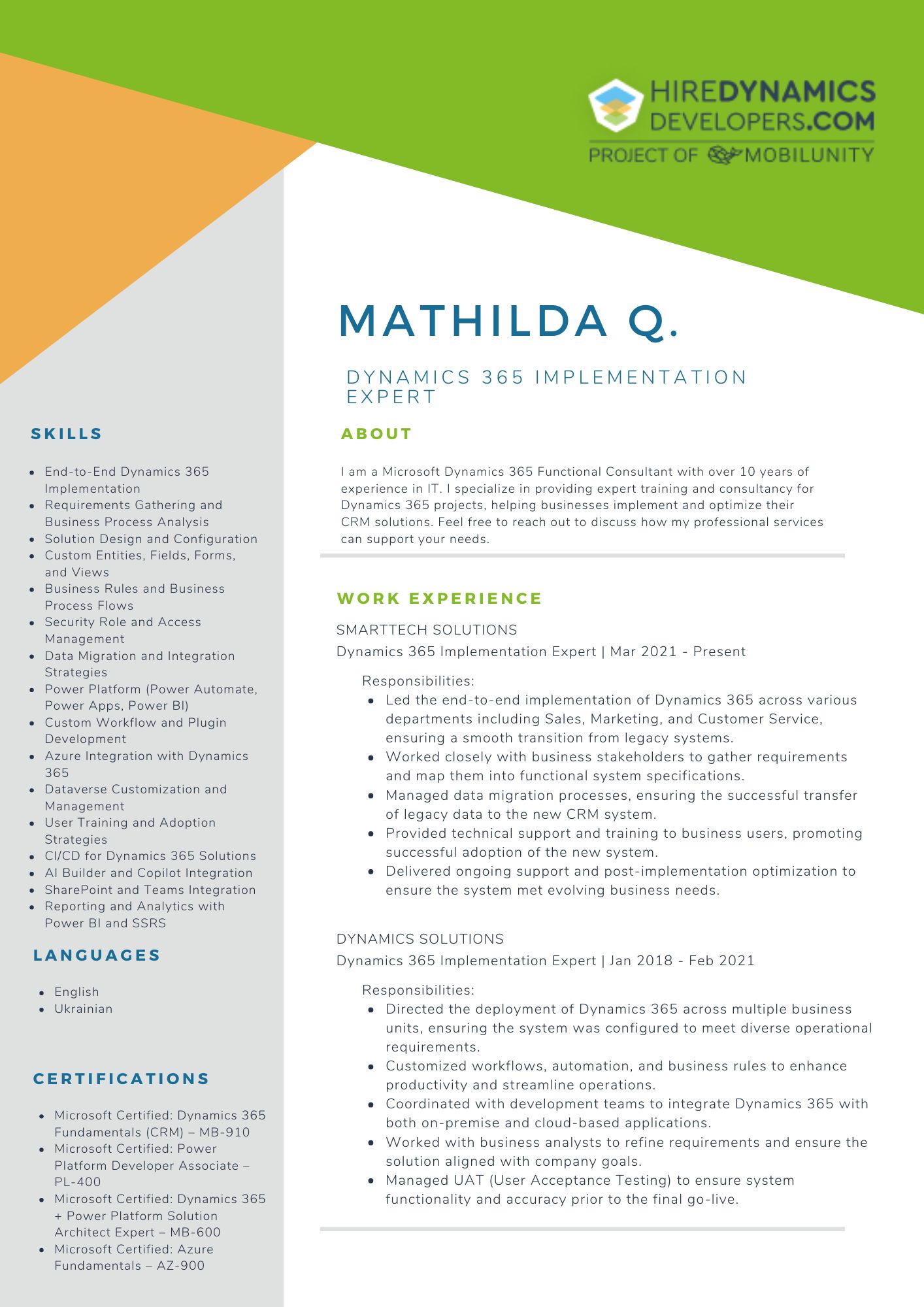
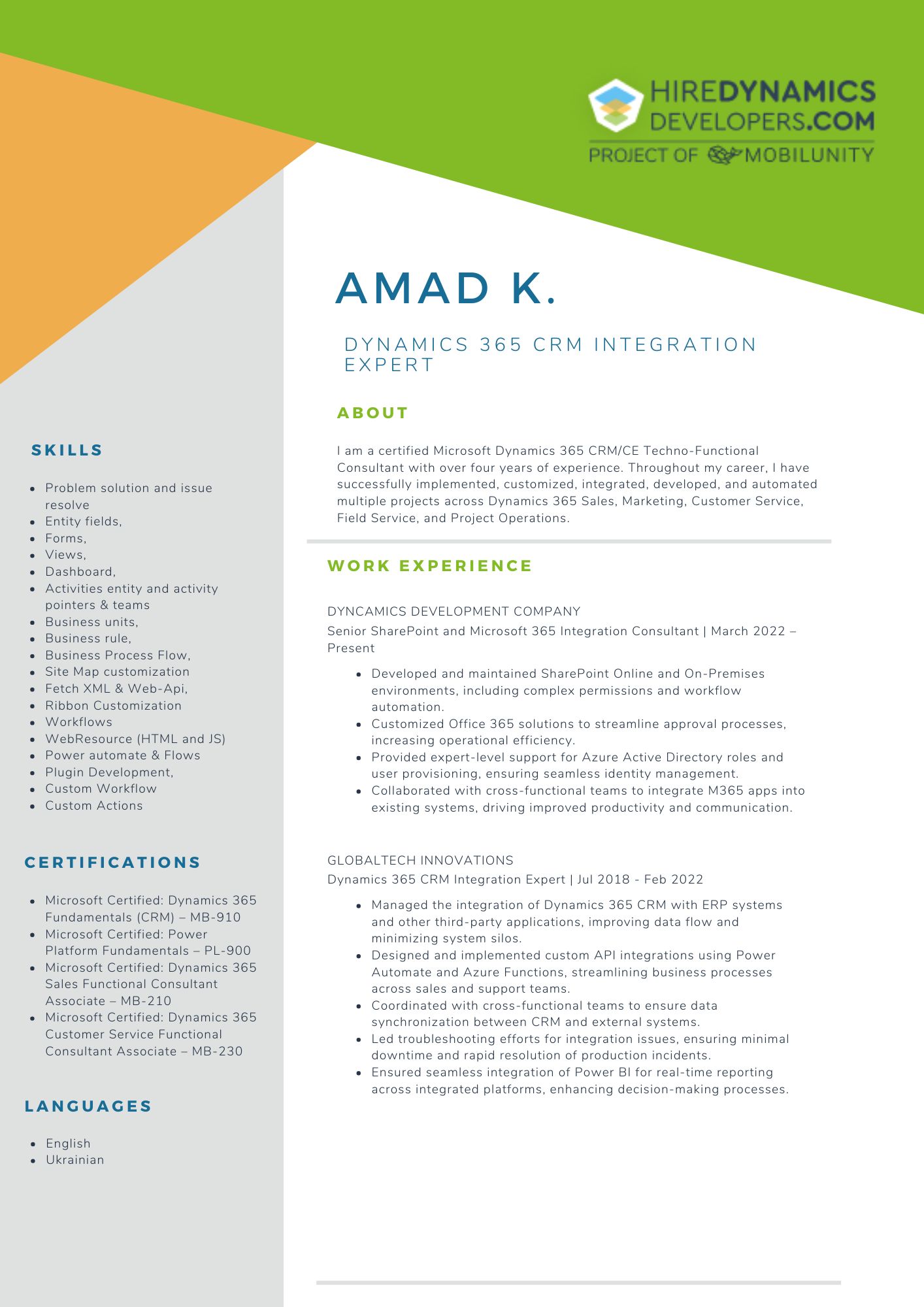

Conclusion
To sum up, many firms migrate from Salesforce to Dynamics CRM to get a powerful environment with all information in one place. With the D365 toolkit, your team has a collaborative space, where all leads, financial reports, and marketing campaigns are at your fingertips.
Sure, the switch from Salesforce to Dynamics CRM may be complex and time-consuming. Armed yourself with key steps and tips you handle it easier. In addition, with a reliable expert on your side, your transition will become more secure and hassle-free. Find your solution and enjoy new features with Dynamics!
FAQ
What steps should businesses take when migrating from Salesforce to Dynamics 365?
Start by assessing their Salesforce environment to identify which data, custom objects, and workflows need to be migrated. Next, clean and deduplicate data, map fields to Dynamics 365, perform test migrations, and finally execute the full migration with proper validation and user training.
How to troubleshoot Salesforce and Dynamics 365 integration issues?
Troubleshooting involves checking API connections, reviewing synchronization logs, and validating field mappings. Also, you should monitor for duplicates, missing records, or workflow errors and adjust integration rules or configurations as needed.
How long does a typical Salesforce to Dynamics 365 migration take?
Migration time depends on the complexity of the Salesforce environment, volume of data, number of custom objects, and integrations. Small to medium setups may take a few weeks, while large enterprise migrations can take several months with multiple testing phases.
Can I maintain both Salesforce and Dynamics 365 during migration?
Yes, hybrid setups are possible where Salesforce and Dynamics 365 run in parallel. Our consultants can configure real-time synchronization so data stays updated in both systems until the full transition is complete.
Outline
Tengiz C.
10 Hours / Week
Kudakwashe G.
20 Hours / Week
Alexander S.
40 Hours / Week
Request Our Services
Enjoy new features with an extensive Dynamics 365 environment!
Your Partner Recognized in Dynamics Community







